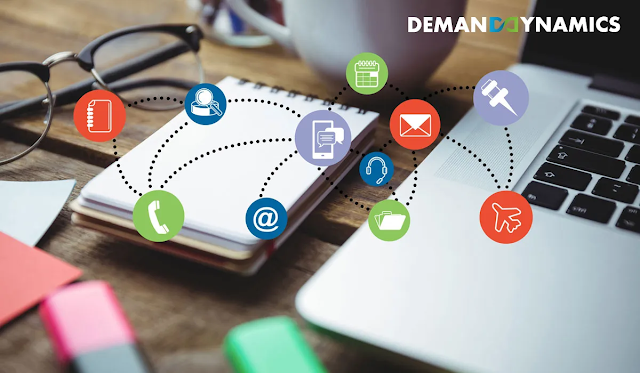The all-you-need-to-know guide on cloud migration and its benefits
The cloud is where the future is. Cloud adoption means different things to different people. Cloud adoption offers multiple benefits.
The cloud is where
the future is. An increasing number of organizations are migrating to the cloud
as it offers better operational flexibility and cost-efficiency. The pandemic
has ushered in an era of accelerated movement towards the cloud. A rapidly
changing landscape demands an infrastructure that can grow along with changing
demands.
Cloud adoption offers multiple
benefits. But the journey can be fraught with obstacles as it has a pervasive
influence across various areas. There are many moving parts and decision points
that organizations will have to navigate before moving to cloud technology.
Let’s have a quick look at what the cloud means.
Peering into
the cloud
Cloud adoption means different
things to different people. No two needs and journeys are similar. That is the
advantage and power of the cloud. But the downside is it raises a lot of
questions.
What is SaaS? Is moving your
entire platform to the cloud a viable option? What are the different types of
clouds? As a company with extensive experience in the cloud computing and cloud
transformation space, we’ll try to throw some light into the world of cloud
technology.
Infrastructure
As A Service (IaaS)
IaaS is a complete computing
stack that includes servers, operating software, data storage, and instant
computing infrastructure deployed in the cloud and managed over the internet.
Software As
A Service (SaaS)
The SaaS model is the quickest
growing market segment. Software is centrally hosted and maintained. Users can
subscribe to the software and utilize it on-demand. It eliminates the need for
huge storage space and specialized teams to maintain/upgrade the software.
In the context of cloud ERP,
the ERP solution is hosted in the cloud and users gain anytime access to
business-critical information. It has the advantage of having significantly
lesser upfront costs and being highly scalable.
The top 10
benefits of using a cloud ERP solution
- The subscription-based payment model lowers TCO and upfront costs.
- IT security and upgrades are taken care of by the vendor
eliminating the need for in-house IT support.
- Application software licensing costs are cut back on.
- Ability to scale up or down based on storage and computing
requirements.
- Enhanced data security and availability.
- Disaster recovery management programs by the vendor offer complete
data backup.
- Valuable to SMBs as it offers advanced functionality at a much
lesser investment.
- Ability to expand geographically as software isn’t stored or
maintained locally.
- Reduced end-user training costs.
- Higher computing power and extended functionality.
- The answer to the question of whether cloud ERP is the right investment to make for fast-growth organizations is a resounding ‘Yes’. There are several types of cloud ERP available.
Types of
cloud ERP software
Multi-tenant
SaaS– A
single version of an ERP solution is centrally available to multiple
organizations. However, strictly authenticated access is available to data. The
data of one organization isn’t accessible to the others.
Single-tenant SaaS- Organizations that prefer
a single ERP solution and its infrastructure to be exclusively available to
them opt for a private instance. A custom-built ERP instance is available on a
private server.
Public cloud- A public cloud is owned
by the service provider. Multiple companies can utilize the cloud computing
services provided. Data is private and isn’t shared or accessible across
organizations.
Private cloud- A cloud computing service
that is available privately and exclusively for a single organization.
Microsoft
Dynamics 365- The top player in cloud ERP solutions for a reason
What’s the difference between
top players and the also-rans? It is the difference between software that
facilitates a better way of working and a solution that repeatedly gets in the
way of progress. A startlingly large number of companies accrue higher costs
after moving to the cloud.
The reason behind it is choosing the wrong software.
Dynamics 365 is a
strong ERP solution from the trusted Microsoft stable. As a
multi-tenant public cloud service, it offers great cost savings and a smooth
user experience. Users can be assured that their data is stored in hyper-scale,
enterprise-grade data centers. It combines the power of a full-fledged ERP
software and a feature-rich CRM.
Are you
making a move to the cloud?
We heard you saying, ‘yes’! Migrate
to the cloud with
the trusted guidance of our Microsoft experts. We are a Gold partner with extensive
experience in the Microsoft ecosystem. We strive to work harder, faster, and
more flexibly than our competitors. If you are just getting started on your
cloud journey we’d love to come along and guide you along the way. Reach
out to us for expert opinions on how to transform your
cloud migration ideas into successful implementation
of Dynamics 365.
Originally published on



Comments
Post a Comment